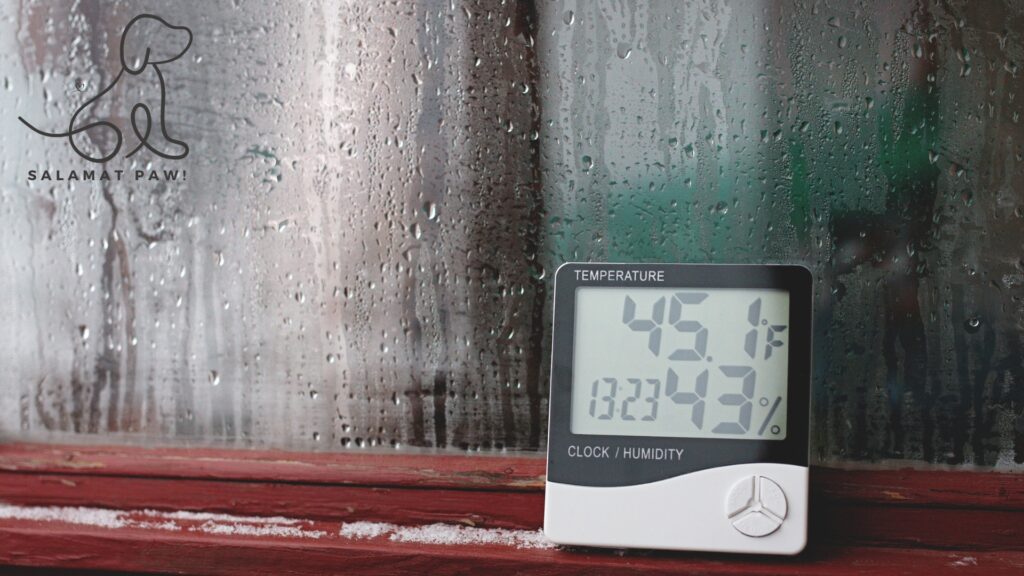The hot and humid climate of the Philippines poses a significant risk of heatstroke for dogs. As a responsible pet owner, it’s crucial to recognize the signs of heatstroke and know how to prevent it to keep your canine companion safe. This comprehensive guide will help you identify the symptoms, understand the causes, and implement effective strategies to protect your dog from heatstroke in the Philippine climate.
Understanding Heatstroke in Dogs
Heatstroke, also known as hyperthermia, occurs when a dog’s body temperature rises above the normal range of 38.3°C to 39.2°C (101°F to 102.5°F) and cannot be regulated naturally. If not addressed promptly, heatstroke can lead to severe organ damage and even death.
Why Dogs Are Susceptible to Heatstroke in the Philippines

- Climate Conditions: The Philippines experiences high temperatures and humidity levels, especially during the summer months. Dogs cool themselves primarily by panting, which is less effective in humid conditions.
- Breed Factors: Certain breeds with thick coats, short noses (brachycephalic breeds like Pugs and Bulldogs), or overweight dogs are more prone to heatstroke.
- Lack of Acclimatization: Dogs not accustomed to the tropical climate are at higher risk.
- Environmental Exposure: Prolonged exposure to sunlight, hot surfaces, or being left in poorly ventilated areas increases the risk.
Common Signs of Heatstroke in Dogs
Recognizing the early signs of heatstroke can save your dog’s life. Watch out for:
- Excessive Panting: Rapid and heavy breathing even when not exercising.
- Salivation and Drooling: Thick, sticky saliva and excessive drooling.
- Red or Pale Gums: Discoloration of the gums and tongue.
- Weakness and Lethargy: Difficulty standing, walking, or general weakness.
- Vomiting and Diarrhea: Sometimes with blood.
- Increased Heart Rate: Rapid pulse that can be felt by placing your hand on their chest.
- Dizziness or Staggering: Lack of coordination or collapsing.
- Seizures: In severe cases, dogs may experience seizures or fall into a coma.
Immediate Actions to Take If You Suspect Heatstroke
If you observe any of the signs mentioned above:
- Move Your Dog to a Cooler Area: Get them out of the heat immediately and into a shaded or air-conditioned space.
- Offer Water: Provide small amounts of cool (not cold) water to drink.
- Cool Down Gradually:
- Wet your dog’s body with cool water using a hose, sponge, or wet towels.
- Focus on areas with less fur, like the belly, groin, and paws.
- Do not use ice or extremely cold water, as this can cause shock.
- Monitor Body Temperature: If possible, use a rectal thermometer to check their temperature. Aim to reduce it to around 39°C (103°F).
- Seek Veterinary Care: Even if your dog appears to recover, heatstroke can cause internal damage. Contact your vet immediately for further instructions.
Preventing Heatstroke in Dogs
Prevention is always better than cure. Here are steps to protect your dog from heatstroke:
1. Provide Ample Shade and Fresh Water
- Ensure your dog has access to shaded areas throughout the day.
- Refill water bowls regularly with fresh, cool water.
- Consider adding ice cubes to the water to keep it cool longer.
2. Avoid Peak Heat Hours
- Schedule walks and exercise during cooler parts of the day, such as early morning or late evening.
- Limit outdoor activities when temperatures are highest, typically between 10 AM and 4 PM.
3. Never Leave Your Dog in a Parked Vehicle
- Temperatures inside a car can rise rapidly, even with windows cracked open.
- Leaving a dog in a parked car, even for a few minutes, can be fatal.
4. Adjust Exercise Intensity
- Reduce the intensity and duration of exercise during hot weather.
- Opt for slow-paced walks instead of vigorous play sessions.
5. Use Cooling Products
- Invest in cooling mats, vests, or bandanas designed for dogs.
- Provide a kiddie pool for your dog to splash in and cool off.
6. Groom Appropriately
- Regular brushing helps remove excess fur and promotes better air circulation.
- Consult a professional groomer about trimming your dog’s coat; however, avoid shaving as the coat also protects against sunburn.
7. Know Your Dog’s Breed and Health Risks
- Be extra cautious with breeds prone to heat intolerance, such as Bulldogs, Pugs, Shih Tzus, and other brachycephalic breeds.
- Older dogs, puppies, overweight dogs, and those with medical conditions require additional care.
8. Provide Adequate Ventilation
- Ensure indoor areas are well-ventilated with fans or air conditioning.
- If air conditioning isn’t available, consider using evaporative coolers or placing frozen water bottles near your dog’s resting area.
Understanding the Role of Humidity

High humidity levels in the Philippines exacerbate the risk of heatstroke because:
- Reduced Panting Efficiency: Dogs cool themselves by panting, and humidity hampers the evaporation of moisture from their tongues and lungs.
- Heat Index: The combination of temperature and humidity (heat index) determines how hot it feels. High humidity makes the air feel hotter than the actual temperature.
Educate Others and Spread Awareness

- Community Vigilance: Encourage fellow dog owners to be aware of heatstroke risks.
- Social Media: Share information on platforms to reach a wider audience.
- Support Local Shelters: Assist in providing resources to shelters that may struggle with keeping animals cool.
Final Thoughts
Heatstroke in dogs is a preventable condition. By staying vigilant, recognizing the signs, and taking proactive measures, you can protect your beloved pet from the dangers of overheating. The Philippine climate presents unique challenges, but with proper care and attention, your dog can enjoy a safe and happy life, even during the hottest months.


Leave a Reply